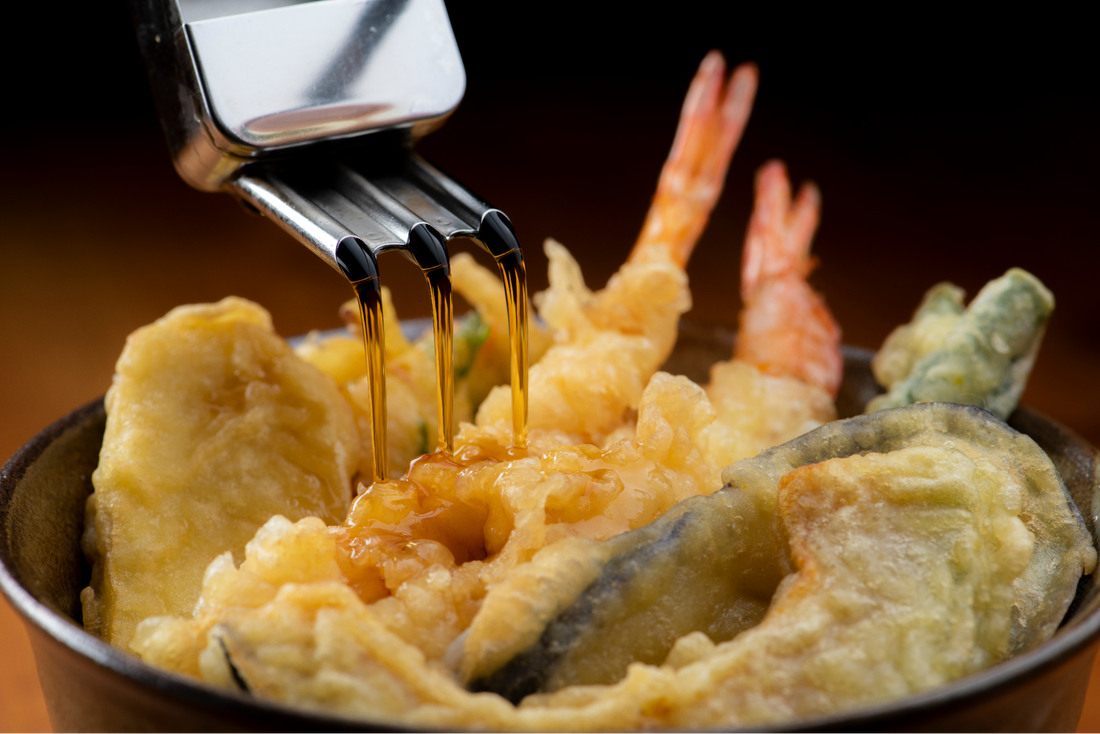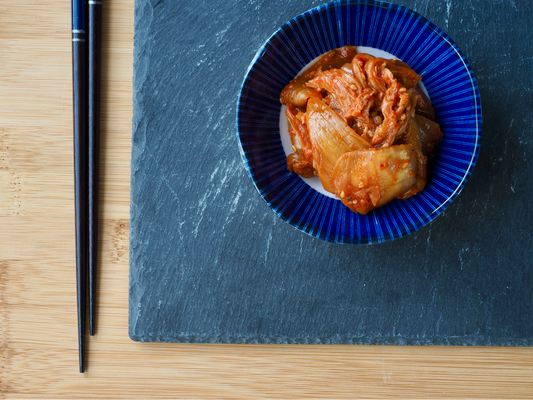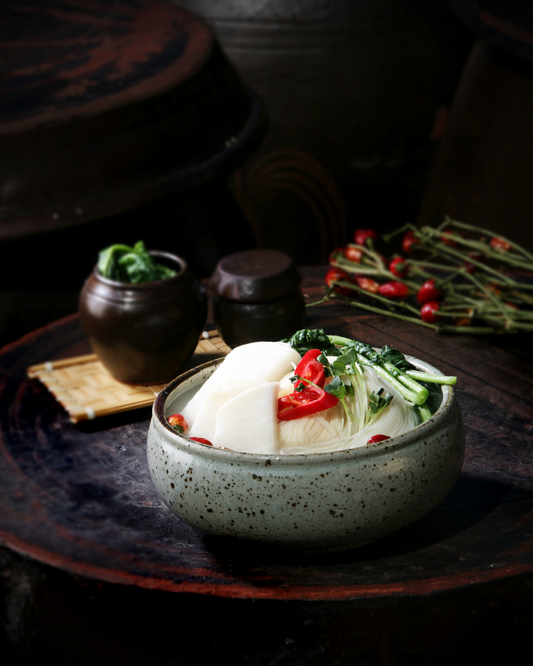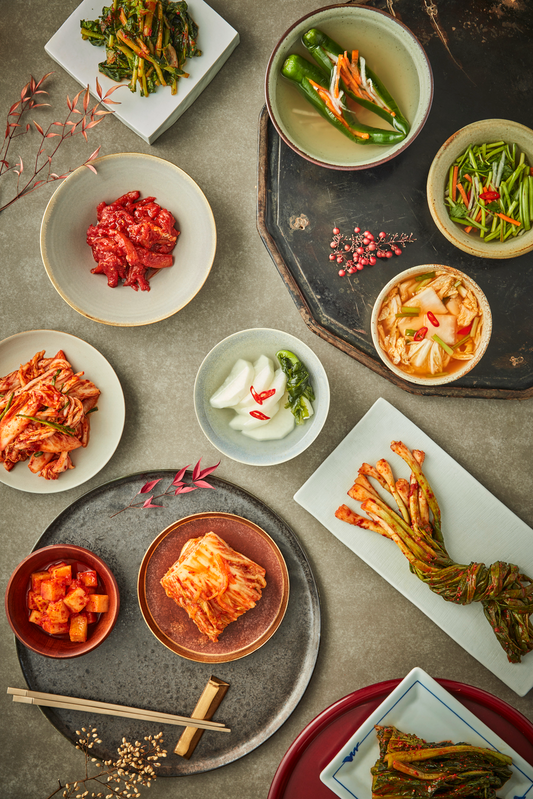Donburi: The Rich Flavor Combination of Japanese Rice Bowl and Kimchi
Mixing Japanese donburi with kimchi creates an exciting meal. It shows how well Japanese and Korean foods work together. Donburi has been around since Japan's Edo period. It mixes rice with different toppings like the sweet Unadon's grilled eel or the spicy Butadon's pork.
Each kind of donburi shows off Japan's amazing food culture. Favorites include Gyudon, Katsudon, and Tendon.
Adding kimchi to Japanese dishes like donburi brings a fantastic new taste. Kimchi's spice and sourness cut through the dish’s rich flavors. This adds excitement and a nice texture change to the meal. It's a hit in cities where people love trying bold and mixed flavors.
Donburi started as a simple rice bowl but has grown a lot over time. It changed during the Muromachi and Edo periods, showing off its flexibility. It often includes local and seasonal ingredients. Kimchi, made from local produce and dependent on the season for its fermentation, shares this adaptable nature. Both show how food can evolve and preserve cultures.
Gyudon and Butadon are especially good with kimchi. Gyudon, with its sweet beef and possible toppings like egg yolk or cheese, goes well with kimchi’s sourness. Butadon, having a stronger marinade, matches the strong flavors of kimchi. This makes for an interesting and balanced dish.
Donburi has many regional versions, like Sosu Katsudon from Fukui or Kaisendon from Hokkaido. Exploring these lets you taste different parts of Japan. Adding kimchi brings an extra flavor and shows how worldwide cuisines can blend. It makes the dish more exciting and appreciated by global food lovers.
In short, combining Japanese donburi with kimchi does more than just mix tastes. It's a celebration of cooking history and new ideas. This pairing lets diners journey through Japan and Korea's rich food cultures in every bite.

The Taste and Characteristics of Donburi
Donburi is a key dish in Japanese food, mixing simple tastes wonderfully. It uses short-grain Japonica rice and tops it with meats or vegetables. The mix of Japanese donburi and kimchi is more than food. It's a journey into Japanese cooking with a touch of Korean flavors.
An overview of the types of Donburi, such as Gyudon, Katsudon, and how they are prepared
Gyudon consists of beef and onions in a sweet sauce. Katsudon has a breaded pork cutlet, deep-fried and then simmered with egg and onion on rice. Donburi suits many tastes, blending kimchi with Japanese dishes for a unique fusion.
Donburi varies in texture, like Tendon's crisp tempura or Oyakodon's creamy egg. There's a choice for any preference.
Making donburi is about finding the right mix. Oyakodon's rich broth represents family, while Kaisendon offers cool sashimi on rice. Adding kimchi brings out a bold, tangy flavor that complements the dish's complexity.
Savory, rich, and customizable, adding kimchi to donburi enhances its umami tastes. This combination of donburi and kimchi shows how Japanese and Korean foods can come together beautifully.

The Flavor Harmony of Donburi and Kimchi
Donburi and kimchi together show a beautiful mix of flavors. They bring together Japan's famous rice bowl and Korea's spicy cabbage. This mix is not just tasty. It makes eating a fuller experience.
How kimchi's spiciness and acidity contrast and enhance the savory richness of Donburi
Donburi is simple yet deep in taste. It's perfect with the vibrant kimchi. Kimchi's sharp taste cuts through Donburi's rich rice and toppings. These could be tender beef or fresh veggies.
This mix makes each flavor stand out more. It also brings them together in a new way. It makes you want to keep trying and enjoying each bite.
Adding kimchi to Donburi makes it look and taste exciting. The bright colors of kimchi are a feast for the eyes. And the taste lives up to the promise. This pairing is great for those wanting to try new foods. It combines different cultures and flavors in one delicious bowl.

Tips and Recipe for Pairing Donburi with Kimchi
Mixing asian food and kimchi can make the classic Japanese rice dish, donburi, even better. Kimchi works well with various donburi dishes, adding a zesty flavor that goes great with the dish. When adding kimchi with Japanese food like donburi, pick a kimchi that matches yet brings out the dish's flavors.
Best practices for incorporating kimchi into Donburi and different ways to enjoy them together
Think about the main parts of your donburi when adding kimchi. For beef donburi, cucumber kimchi is a great match. It adds crunch and freshness. If your donburi has seafood, use cabbage kimchi. It's spicy and tangy, perfect for fish flavors.
To add kimchi to donburi, put it on top or serve it on the side. Both ways let kimchi's vivid taste shine, enhancing your meal. Trying different kimchi types, like radish or mustard greens, can add new tastes and textures to your dish.
Kimchi not only brings extra flavor but also makes your meal healthier. It adds vitamins and good bacteria. Thus, combining asian food and kimchi in donburi creates exciting and healthy meals.

Udon: A Comforting Combination of Thick Noodles and Kimchi
The udon and kimchi pairing is a mix of soft Japanese udon noodles and spicy Korean kimchi. This meal is not just delicious but also blends two food traditions. Udon with its chewy noodles and cozy broth pairs well with kimchi's bold taste, creating a favorite mix.
When kimchi joins udon, it's not just an add-on. It makes the meal balanced in taste and rich in texture. The usually mild broth becomes exciting with kimchi. It adds spice, sourness, and umami without overwhelming the udon. Every bite becomes a joy.
To make this dish, simmer udon noodles in a tasty broth with soy sauce, mirin, and dashi. Adding kimchi last keeps its crunch and flavor strong. It makes the noodles take on a new life. The spicy kimchi brightens the rich broth.
Enjoyed everywhere, from Tokyo's busy streets to quiet home kitchens, the udon and kimchi pairing takes you on a flavor journey. It shows how versatile kimchi can be with noodles. Each spoonful brings a new delight.

The Unique Characteristics of Udon
Udon noodles are a big deal in Japanese food. They are known for being thick and chewy. This makes them perfect with many types of soup and sauce. They're great for creative cooking, like mixing with udon and kimchi. This mix lets food lovers enjoy soft udon and spicy, sharp kimchi together.
Describing the thick, chewy texture and mild taste of Udon noodles
Udon is made with 450 grams of these sticky noodles. You can find them in the "international" aisle at stores. They're thick and have a great feel in your mouth. They soak up flavors well. When udon is eaten with kimchi, it shows how these mixes are expanding culinary experiences with kimchi in today's kitchens.
A popular dish mixes Korean and Japanese tastes by stir-frying udon with diced pork and kimchi. This meal not only combines udon and kimchi well. It also adds butter and gochujang for more flavor. Each serving has 313kcal. It's filling, with 37g of carbs, 17g of protein, and 12g of fat.
There's 1338mg of sodium in the dish, mainly from kimchi and gochujang. So, it's important to season it just right. Adding 1/2 cup of chicken broth, 5 tablespoons of butter, and some kimchi juice makes the udon even better. Every bite is full of flavor and texture.
Udon works so well with udon and kimchi pairing because it's mild. It lets the kimchi's heat and tang stand out but not too much. This combo doesn't just explore new flavors. It also brings global cuisine to your table. It's a great addition to anyone's cooking.

The Flavor Combination of Udon and Kimchi
Asian food lovers often celebrate the mix of udon and kimchi. The mild, comforting broth of udon meets the strong, tangy taste of kimchi. This creates an amazing flavor journey. This match shows how well kimchi can upgrade cozy, familiar foods.
How kimchi's spice and acidity elevate the comforting broth of Udon
Picture a hot bowl of udon with its savory, soul-warming broth. Now, imagine adding the lively kick of kimchi to it. The spice and zest from kimchi slice through the broth's richness. They add an exciting layer without hiding udon's gentle flair. It's this harmony that makes the duo a hit.
It takes more than just putting kimchi on udon to mix them well. Take a recipe that mixes kimchi with bacon, for example. It cleverly blends kimchi juice and gochujang with broth and soy sauce. This mix creates a spicy, creamy sauce that clings to the udon noodles perfectly.
Each spoonful gives you the soft udon and the bold taste of kimchi. It's perfect for those wanting to dig deeper into Asian food. Plus, it's adaptable. You can add meats like chicken or pork, or green veggies. This makes it a great choice for many tastes and diets.
This combination deepens udon's often simple taste. It also shows kimchi's power to lift even basic dishes with its lively edge.
The mix of snug udon noodles and vibrant kimchi shows the complexity and energy of Asian cuisine. For those ready to try new recipes, this udon and kimchi pairing is exciting. It offers a world of flavors and textures that are sure to delight and fulfill.

Tips and Recipe for Pairing Udon with Kimchi
Mixing kimchi with udon noodles brings the best of Korean and Japanese tastes together. This combo adds an exciting twist to classic meals. It makes for a perfect lunch or dinner, offering a powerful mix of flavors.
Tips on incorporating kimchi into Udon dishes, including cold and hot varieties
To blend kimchi and udon well, aim to mix flavors and textures right. Use strong, aged kimchi with udon in hot soup for a great match. For cold dishes, pick less fermented kimchi for a light, crisp taste. You should use a cup of chopped kimchi for each serving to get a good mix of spice and tang.
For a hit, try the Kimchi Udon Noodle Stir Fry. It's quick, only taking 15 minutes. You'll need 400 grams of udon and a cup of aged kimchi for a flavorful dish. Add onions, green onion, and bacon for more texture. Season with Korean chili flakes, chili paste, soy sauce, honey, sugar, garlic, and sesame oil. A splash of rice vinegar adds an extra kick.
Add spinach, mushrooms, or cabbage for more variety. Or, for something special, mix in melted cheese like cheddar or Gruyere. The dish packs 389 calories per serving and offers good protein and fat. Always check with a nutritionist for dietary advice or specific health targets.
FAQ
What are some tips for pairing kimchi with jjajangmyeon?
For a bold taste, use well-fermented kimchi with jjajangmyeon. Or, choose fresh kimchi for a lighter spice. Aged kimchi adds deep tanginess that enhances the dish's flavors.
How does kimchi complement the flavors of sushi?
Kimchi brings a zesty kick and umami depth to sushi's delicate taste. It should balance, not overpower, the rice and seafood. This adds a spicy dimension to the fresh sushi.
Can kimchi be paired with all types of sushi?
Some sushi types work better with kimchi's boldness. Tuna and eel, for example, can be enhanced by kimchi's acidity and spice. This creates harmony between flavors.
What is the best way to incorporate kimchi into a donburi dish?
Pick kimchi that contrasts with donburi's main ingredients. Cucumber kimchi pairs well with beef donburi. You can add it on top or serve it on the side.
How does kimchi influence the flavor profile of udon noodles?
Kimchi adds tangy spice and crunchy texture to udon noodles and mild broth. This combination creates a comforting, yet lively eating experience. The bold flavor of kimchi livens up udon.
Are there specific types of kimchi that are better for pairing with noodle dishes like jjajangmyeon and udon?
Yes. Aged kimchi works well with jjajangmyeon for a deeper flavor. Light noodle dishes like udon can be paired with fresher kimchi. Matching the kimchi's flavor to the dish is key.
What are some general guidelines when experimenting with kimchi in Asian fusion cuisine?
When using kimchi in fusion dishes, aim for balance and harmony. It should enhance, not overpower, the original flavors. Trying different kimchis can help find the ideal match for various dishes.
Can kimchi be a suitable pairing with seafood, outside of its traditional Korean context?
Definitely. Kimchi's vibrant flavor can make seafood dishes more exciting. It cuts through the richness and adds complexity, whether in a sushi roll or with a seafood platter.
How does one balance the strong flavor of kimchi with the mild nature of Japanese donburi and udon?
Use kimchi sparingly to balance with mild dishes like donburi and udon. Choose kimchi types that complement the dish's main ingredients. The right kimchi can work well with either rich or vegetable-centric toppings.








